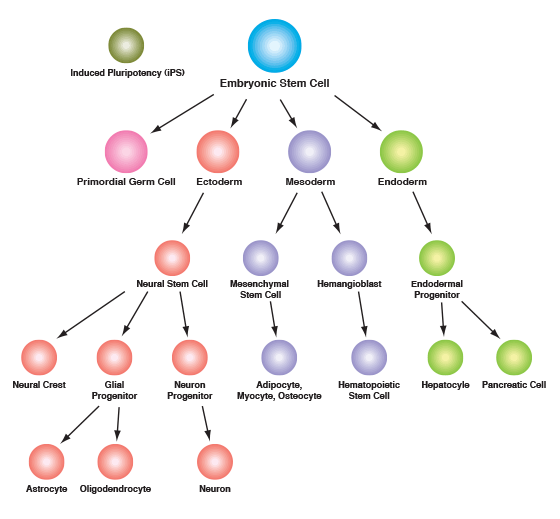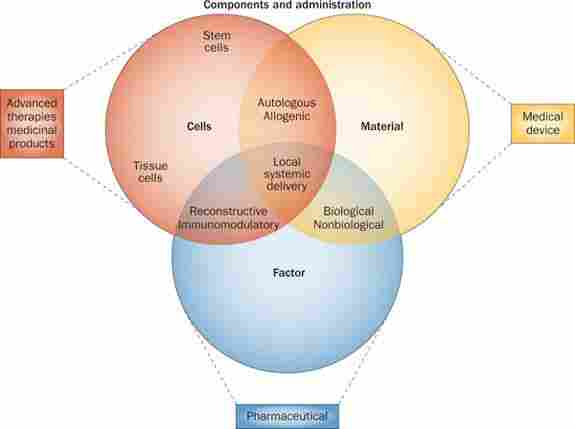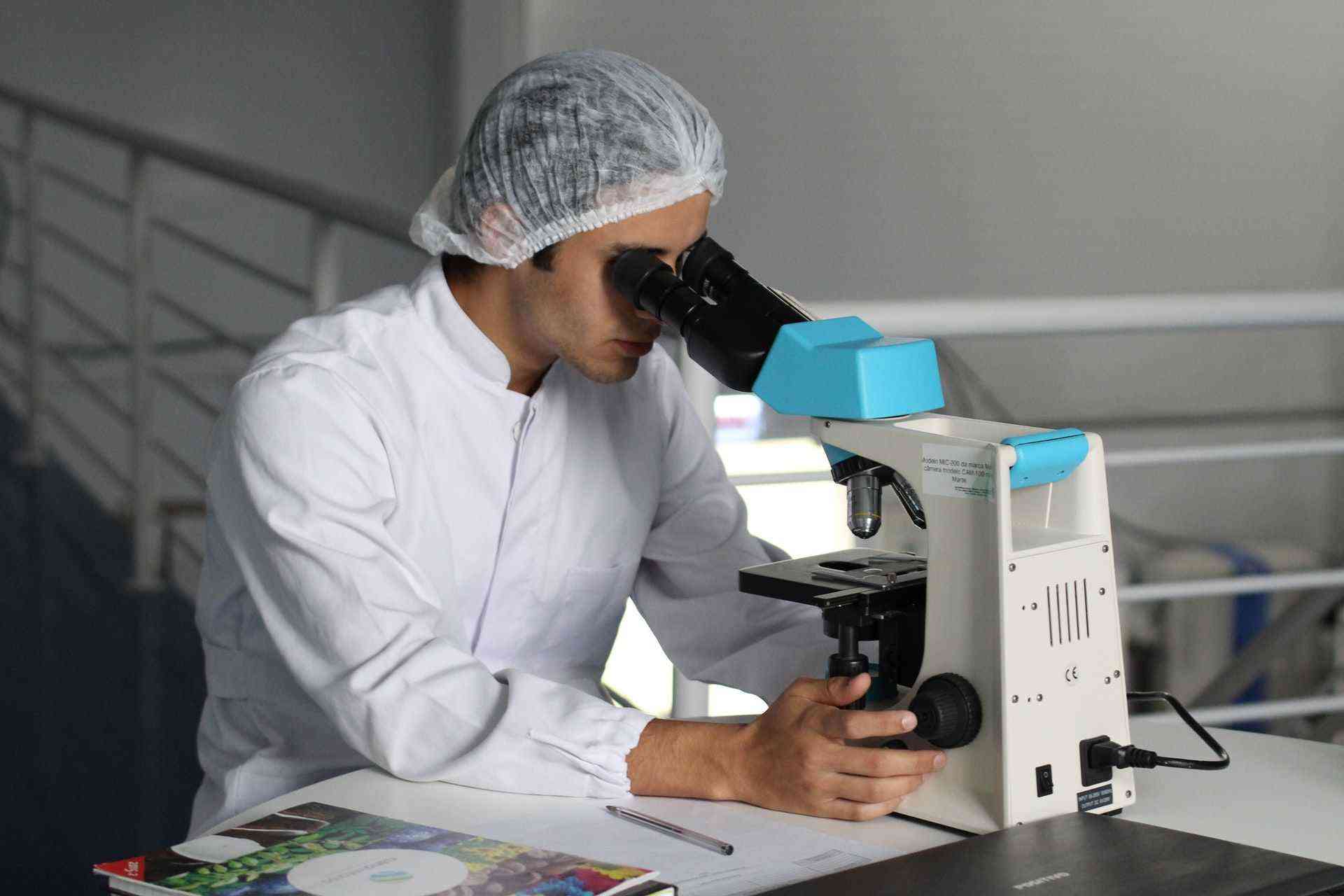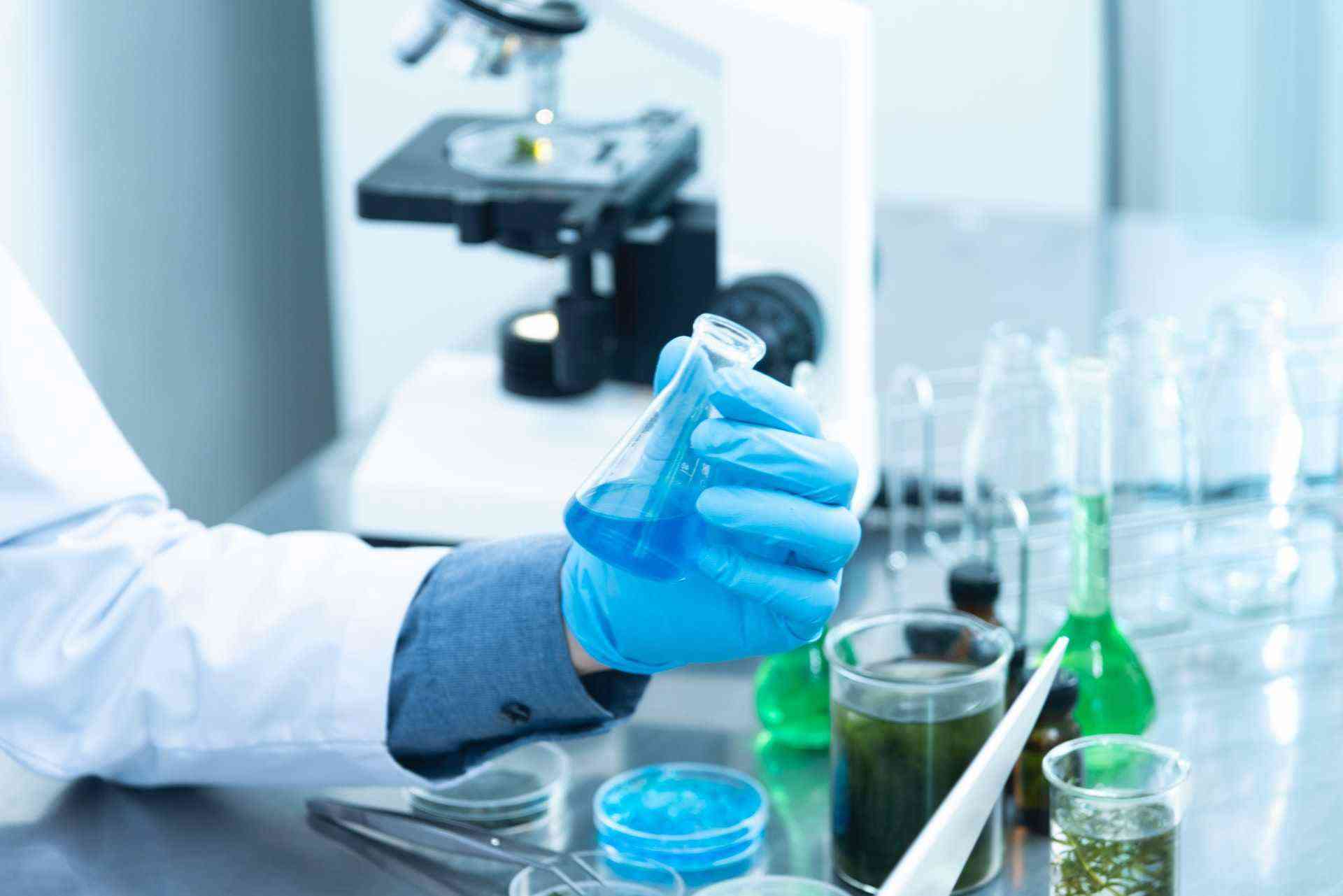Stem cells are the type of cells that are capable of giving rise to more cells of their kind indefinitely and are also able to differentiate into other cell types. They can either be totipotent or pluripotent or multipotent or oligopotent or unipotent. Now, what is totipotency? It is the ability of a single cell to express its genes and give rise to all cells present in an organism. Pluripotency means a cell can differentiate into most cells of an organism, but not all. Multipotency means a cell can differentiate into all the cells present in a specific tissue. Oligopotency means a cell can differentiate into only a few cell variants. If a stem cell can differentiate into only one type of cell, then it is called unipotent. You keep hearing the same word “differentiation” again and again and may have asked, what is “cell differentiation”? Cell differentiation is the process through which a cell changes from one cell type to a more specialized one.
A fertilized human egg is the example of a totipotent stem cell that can form a whole organism. Due to the ongoing cell differentiation process, the egg forms the placenta and embryo. The embryo contains pluripotent stem cells, which can give rise to any cell type in a human but cannot form a whole human itself since it cannot form the placenta. As the pluripotent stem cells of the embryo keep undergoing cell differentiation, it creates three germinal layers, ectoderm, endoderm, and mesoderm. The cells of the three germinal layers are multipotent stem cells that can only differentiate under a specific niche and differentiate into several cell types specific to that niche.
For example, a cell from the ectoderm layer can form skin or neurons but cannot form a lung cell.

As the cell keeps differentiating, it becomes more specialized, and the number of cell types it can turn into gets fewer as it gradually loses its potency. Once the cell is unipotent, it can only grow into a specific cell variant as it has reached its terminal differentiated state.
Stem cells can be of many types, such as:
- Embryonic Stem Cells (ESCs)
- Umbilical Cord Stem Cells. Also known as Cord Blood Stem Cells (UCSCs)
- Tissue-Specific Progenitor Stem Cells. Also known as Tissue Specific Stem Cells (TSPSCs)
- Induced Pluripotent Stem cells (iPSc)
Researchers obtain embryonic stem cells mostly from IVF clinics. Once they have obtained a zygote, they allow it to proliferate until it reaches the blastocyst stage. A blastocyst has two parts; ICM (inner cell mass) and trophoblast. The ICM is what we call embryonic stem cells. They isolate it into a culture dish and processes it for research. Most of the stem cells for research purposes are obtained this way. Also, almost any cell in the human body can be turned into a pluripotent stem cell by introducing the necessary transcription factors. This is like rewinding the clock and going back in time; you are inducing pluripotency again from a more specialized cell, which was previously thought to be impossible. If a cell is turned into a pluripotent stem cell in this way, it is called induced pluripotent stem cell or iPS cell or iPSC which are “almost“ equivalent to embryonic stem cells.
Stem cells can be used for various purposed. They can be used to replicate in-vivo disease models in a lab setting. They can also be used for research about genetic disorders. Drug tests can also be performed on stem cells before applying for human trials. Perhaps the most prominent use of stem cells is in regenerative medicine.
Since stem cells can differentiate into a specific type of cell, they can be used for repair and healing purposes. Hence comes the name regenerative medicine. Regenerative medicine is another name for stem cell therapy. Stem cell therapy is used to restore the structure and functions of tissues and organs that are unable to recover due to major trauma, accident, or disease. Thus stem cell therapy can be used to cure previously untreatable diseases. How does it work? First, some stem cells are introduced in the damaged tissue or organ, then required transcription factors are added in the optimal amount. With time the stem cells specialize into a given type of cell and repair the damaged tissue or organ. There are a few misconceptions about stem cells. Some people believe they are only present in a developing embryo which is not true at all. Stem cells are present in almost everywhere in an adult human body, including the brain, eyes, and muscles, which help the regeneration of the organ tissues if necessary.
Stem cell therapy has a lot of applications in medicine. The recent progress in the field of regenerative medicine has presented researchers with a whole new way of treating incurable health conditions.
ESCs or embryonic stem cells can differentiate into more than 200 types of cells found in three germinal layers. And they can be used in a wide range of medical conditions such as liver injuries and high throughput screening of drugs. TSPSCs or Tissue-Specific Stem and Progenitor cells can differentiate into other cells of a specific tissue. Sometimes brain tumor chemotherapy can cause neuro-degeneration mediated cognitive impairment also known as chemo brain. TSPSCs can be transplanted, followed by chemotherapies that can restore cognitive functions and can differentiate into neuron cells reducing neuro-inflammation.
MSCs or Mesenchymal Stem Cells can be used in unrepairable orthopedic injury conditions. UCSCs or Umbilical Cord Stem Cells are found in the umbilical cord after childbirth. These stem cells can be used as a treatment in blood disease conditions. iPSCs or Induced Pluripotent Stem Cells are normal body cells that are turned into stem cells by the introduction of proper growth factors. The use of iPSCs has raised various questions due to several limitations. Some of the pathophysiologies are still not understood when applying iPSCs in human subjects.

Stem cells are amazing. Scientists turn the stem cells into the desired type of cells by introducing cell-specific growth factors to produce the desired cells. Stem cells are of great importance in medicine. They can be used to study disease in a lab setting by proliferating specific cells or tissues containing the desired traits which are more efficient and less labor and time consuming than current techniques that involve the use of animal models. Stem cell research can also pave the way for personalized medicine.
Researchers are already trying to cure neuro-degenerative diseases such as Parkinson disease, Alzheimers and Dementia by using stem cells. Also they are trying to activate the stem cells available in our body that can prevent aging allowing us to live longer. Maybe someday we will be able to treat cancer and other neuro-degenerative diseases with the help of stem cells. We may have chemical compounds in the future that can activate tissue-specific stem cells and promote cell growth.

Stem cell research is still limited to a very small number of countries. In the future, more countries may participate and fund stem cell research.
Due to some methodologies used at certain stages of stem cell research and the nature of the research, there has always been a controversy. There are many ethical concerns regarding stem cell research. Some believe stem cell research should be prohibited as humans are playing “God” with this emerging field of biotechnology and considering the moral state of playing with a human embryo some propose that, stem cell research should strictly be prohibited. In contrast, others believe this should go on and may help save thousands of lives in future.
Thank you.
Sources:
- Types of Stem Cells. Retrieved from https://www.unmc.edu/stemcells/educational-resources/types.html on 04/17/2020
- What are stem cells, and what do they do?. Retrieved from https://www.medicalnewstoday.com/articles/323343 on 04/17/2020
- What is a stem cell? Retrieved from https://www.yourgenome.org/facts/what-is-a-stem-cell on 04/17/2020
- What Are Stem Cells? Retrieved from https://www.stanfordchildrens.org/en/topic/default?id=what-are-stem-cells-160-38 on 04/17/2020
Subscribe to our newsletter and stay updated.


